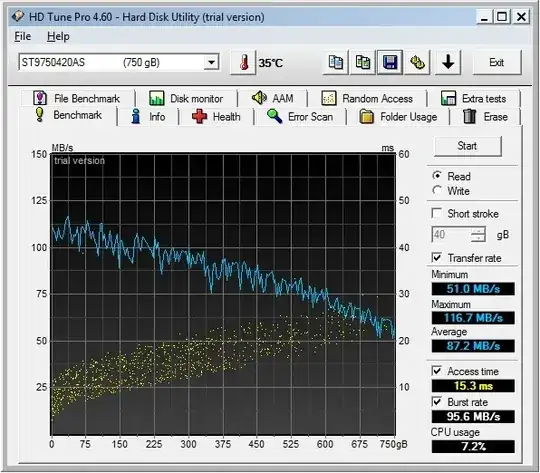If I create a partition at the end of the drive does that create the partition on the outside of the platter where the data is passing under the drive heads fastest?
2 Answers
Most commonly a partition at the "end" of the disk is on the inner-most part of the platter, and will have the slowest transfer speed. Not all drives are guaranteed to work this way however.
- 77,945
- 11
- 124
- 216
-
Ok the opposite of what I thought. – hookenz Oct 22 '10 at 03:04
-
Also found this link helpful. http://www.snia.org/education/storage_networking_primer/stor_devices/data_structure – hookenz Oct 22 '10 at 03:26
-
It's also going to depend a lot on load and caching - if another program accesses the disk and the heads have to move then you wont get quite the expected result, or if the filesystem is fragmented, etc. If you're not tuning a high performance system then I'd be surprised if this made a noticable difference to anything in daily use, and if you are - have you considered RAID? – TessellatingHeckler Oct 22 '10 at 04:54
-
If he really notices any difference by putting files on the beginning/end of a disk, he should consider getting and SSD; they're much faster than disks. – Chris S Oct 22 '10 at 13:44
The farther away from the inside of the disk platters you go, the higher the velocity of the head relative to the platter is. Therefore you can see peak sequential transfer speeds of up to 2X when comparing the outermost area of a hard drive platter to the innermost. This can be verified with a utility such as HDTune.

To take advantage of this, those seeking the highest performance from platter drives will often partition only the start of the drive, therefore formatting the drive to a lower capacity, utilizing the faster part of the hard drive. This process is called 'short-stroking'.
- 2,863
- 12
- 13